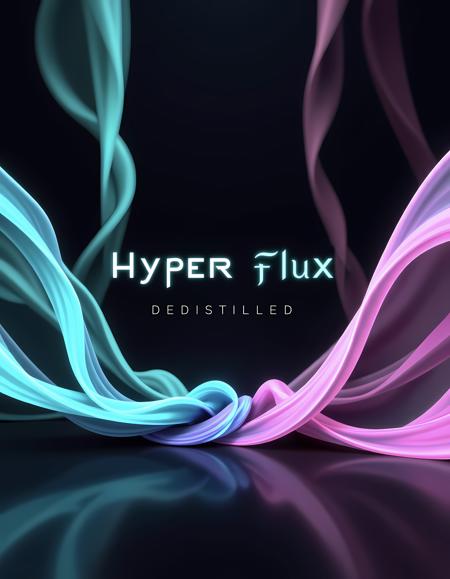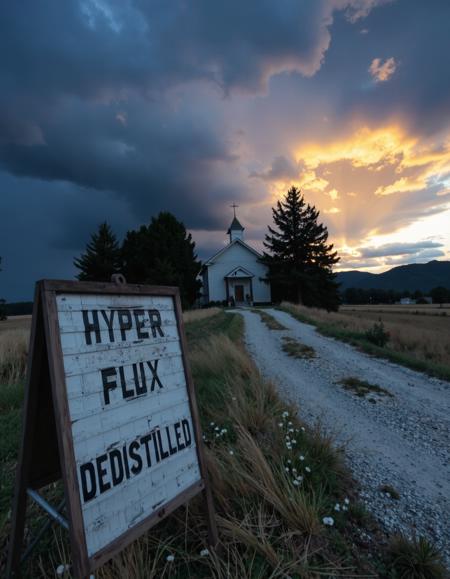![Hyper Flux Dedistilled版本Hyper-8 Steps [q4_KM] (ID: 1229691)](https://image.1111down.com/xG1nkqKTMzGDvpLrqFT7WA/3a5d9575-872c-42b3-be4e-d7dd4a838403/width=450/49766013.jpeg)
***Work in Progress***
Hyper Flux Dedistilled models combine the Flux-dev-de-distill checkpoint by nyanko7 with the Hyper-SD LoRA by ByteDance into single-file models in q4_KM GGUF format for easy use on mid-tier hardware.
The Hyper 16 Steps version provides the same generation time as Flux-dev while producing better results. It approaches Flux Pro in terms of quality and prompt understanding. The Hyper 8 Steps version is twice as fast and offers a balance between speed and quality.
Various weights for the Hyper-SD LoRA were tested, and these models were created using the ones that provided the best results. This ensures that the models maintain consistent performance and converge as expected with the recommended step values, even after quality loss from quantization.
Versions and Recommended Settings:
Hyper 8 Steps:
-
CFG: 1 to 2 (not distilled guidance)
-
Steps: 8 to 12 (more is better, best at 12 steps)
-
Sampler: DPM-2 (for high detail) or DPM++ 2M (for faster generation)
-
Scheduler: Beta
Best for quick generations while keeping image quality above the standard Flux-dev level.
Hyper 16 Steps:
-
CFG: 2 to 3
-
Steps: 16 to 24 (more is better, but 20 gives great results)
-
Sampler: DEIS (for stylized, artistic outputs) or DPM++ 2M (for realistic raw images)
-
Scheduler: Beta
Ideal for refined, detailed images with excellent prompt understanding, similar to Flux Pro.
This is a pruned model, so you will need to download the following :
• Text Decoders: t5_xxl and clip_l from Flux Text Encoders (the FP8 version is recommended for mid to low tier pc).
• VAE: ae.safetensors from Black Forest Labs VAE.
I also recommend trying the following clip_l model for better text and details :
• CLIP Text Encoder (alternative option): CLIP-GmP-ViT-L-14 (HiT GmP TE).
No need to use Flux guidance—this model uses real CFG, just like any Stable Diffusion model, making it possible to use negative prompting effectively. For Hyper-16, use the same CFG value you would normally use for distilled guidance in Flux-dev (e.g., if you usually use 2.5, stick with that). For Hyper-8, I recommend using half of that value.
Future Versions:
This release is in q4_KM format. Other formats, such as FP8, q5_KM or q8_0, may be made available upon request for users with different hardware needs.
This project builds upon the incredible work of the original authors:
-
Flux-dev-de-distill by nyanko7: An advanced checkpoint implementing true classifier-free guidance.
-
Hyper-SD by ByteDance: A powerful LoRA solution enabling faster generation time.
The creation of these models is solely attributed to their respective authors. I take no credit for their work or development. The Hyper Flux Dedistilled models simply integrate and format these into a combined, accessible solution.
Both versions havw been tested to run smoothly on mid-tier GPUs, including a RTX 3070 and a RTX 2060 Super with 8GB VRAM, with excellent performance.
描述:
Best for quick generations while keeping image quality above the standard Flux-dev level.
Recommended Settings for Hyper 8 Steps:
-
CFG: 1 to 2 (real CFG)
-
Steps: 8 to 12 (more is better, best at 12 steps)
-
Sampler: DPM-2 (for high detail) or DPM++ 2M (for faster generation)
-
Scheduler: Beta
训练词语:
名称: hyperFluxDedistilled_hyper8Q4KM.gguf
大小 (KB): 6750259
类型: Model
Pickle 扫描结果: Success
Pickle 扫描信息: No Pickle imports
病毒扫描结果: Success
名称: hyperFluxDedistilled_hyper8StepsQ4KM.gguf
大小 (KB): 6750259
类型: Model
Pickle 扫描结果: Success
Pickle 扫描信息: No Pickle imports
病毒扫描结果: Success


















